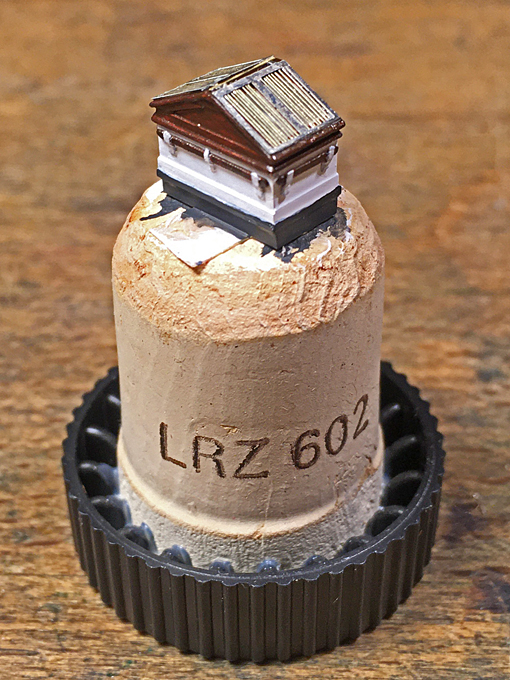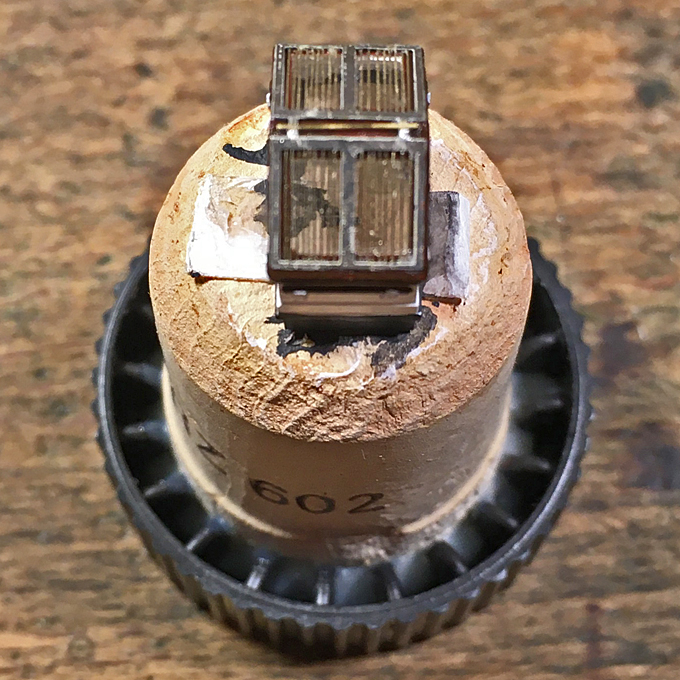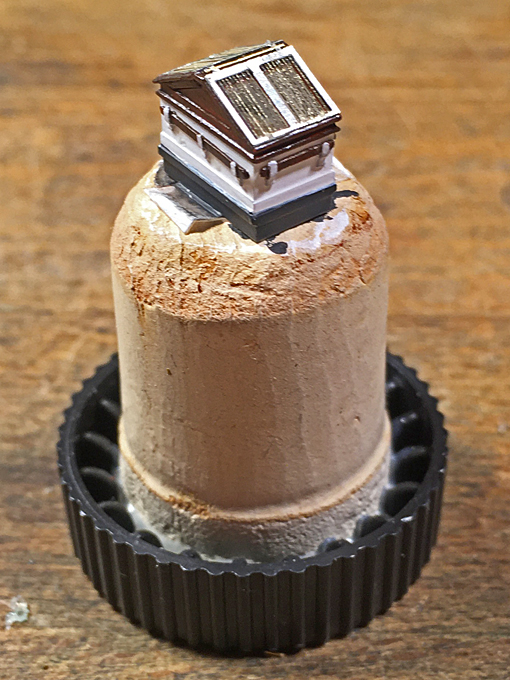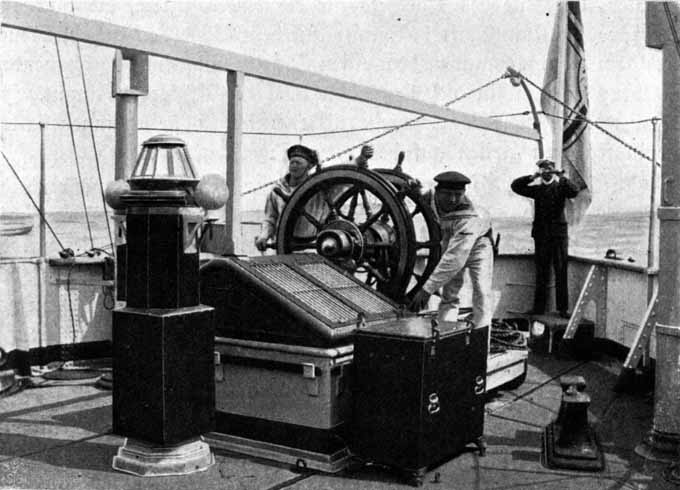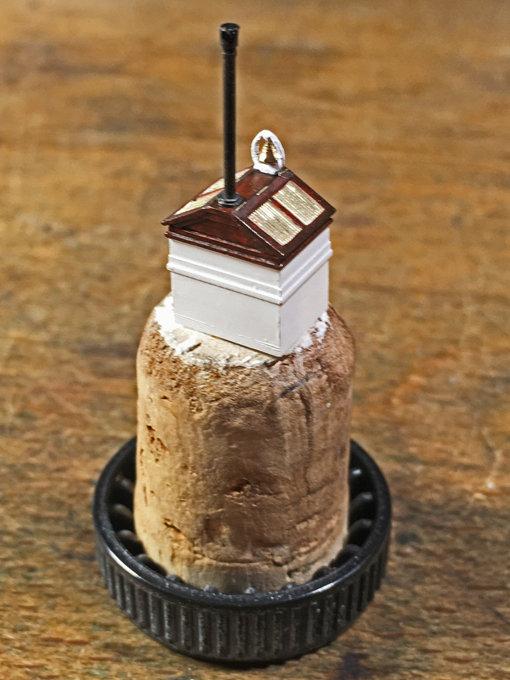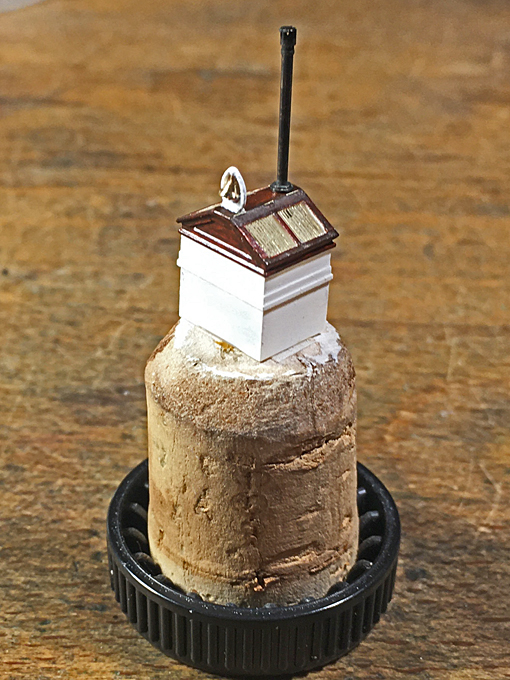-
Posts
6,610 -
Joined
-
Last visited
Content Type
Profiles
Forums
Gallery
Events
Everything posted by wefalck
-
Good to see that the crew will not slip under the table - at least not from the heeling of the boat ...
-
It depends on the material used for the foam. There are, for instance, acrylic foams (essentially foamed-up Plexiglas) that are longer stable than styrofoam. The reason is that they do not contain plasticers. On the other hand, a German kit company sold for a while hulls made from styrene foam extruded into a mould. I got one when I was around 6 or 7, built a crude model from it (my first 'semi'-scratch project) and eventually discarded it in my late 20s I think, when I cleared out some storage space in my parents' garage - if I remember correctly, it did not show appreciable signs of degradation, also because it had not been exposed to daylight really (being painted). I would consider the foam not as a structural element per se, but rather something that helps you building up the hull around some structural members. That then you would cover in some sort of skin, that would remain stable, even if the foam degraded.
-
@Bedford, you are absolutely right, the battens were tightend by shallow wedges driven in from opposite sides under the clamps. Apologies for not having modelled them, but I believe they are stored below deck, when not in use @Pat, thanks for your kind offer, however, it seems that we are able to generate a fairly steady supply to my toolbox 🍷
-
Can't help you with the Port, could also have been a Sherry though - accumulated many of these corks for painting such small items and figures over the years.
-
Thanks, gentlemen ! Keith, I need a glass of port afterwards to calm my nerves down, so I accumulated quite a few corks 🥴 *********************** Completing the skylights 3 The skylight above the officers’ mess in the rear of the ship is the only one for which a close-up photograph exists, so the details can be reproduced with reasonable confidence: The skylight above the officers’ mess (Laverrenz) The basic structure, again, had been built a long time ago and now it was painted as per prototype. The top of the skylight was removable and presumably could be replaced with a more solid hatch-cover in bad weather – the main deck is only a couple of feet above the CWL ! The tarpaulin to cover the hatch would be held down with battens for which clamps were provided on all sides. The battens and the clamps are laser-cut from 0.2 mm Canson-paper and were then soaked in zapon-varnish to harden them. The battens were built up from two layers. Battens and clamps were assembled and then the assemblies cemented to the skylight using satin acrylic varnish. Painted skylight, battens and protective grille before assembly As opposed to the others, this skylight has outside protective grilles, that are fastened with hinges. The frame had been etched from 0.1 mm thick nickel-silver (I couldn’t get brass sheet that thin at the time). Etched-in notches on the underside ensured that the bars would be equally spaced. The bars are made from 0.1 mm brass-coloured copper-wire glued in place with varnish. This assembly then was cemented to the skylight using acrylic varnish. The officers’ mess skylight ready to be fitted to the model To be continued ....
-

Waterways
wefalck replied to Ron B's topic in Building, Framing, Planking and plating a ships hull and deck
John, I had a quick look into my mid-19th to early 20th century textbooks on iron shipbuilding, but didn't find any drawings. However, it is mentioned in the text at several places. -
That's a really clever idea to solder a brass tube into a halfround groove in order to avoid having to shape the somewhat complicated outside profile. In my simple mind I would have attempted to do this with a half-round end-mill ...
-

Running Rigging Line Color Differences
wefalck replied to Keith Black's topic in Masting, rigging and sails
I think most people would use the same colour for aesthetic reasons on 'presentation' style models. If you dress up your (waterline-)model in workaday conditions, then the rope would/should have different colours as Jaager was already indicating. I have indeed done this on scenic presentations of models. -

Waterways
wefalck replied to Ron B's topic in Building, Framing, Planking and plating a ships hull and deck
There are different profiles and the waterways may actually be composed of several pieces of wood in cases. The basic objective is to turn what would be an acute angle between the deck and bulwark into an obtuse angle. Acute angles would collect water, which then can lead to rot. The same logic applies to iron- or steel-ships. Here the gutter is formed often by two angle-irons running along the edge of the deck at some distance apart. One angle buts against the bulwark, the other forms a frame for the wooden deck (as noted above). The space between the angle irons typically is filled with cement to form a rounded gutter. This also prevent water from collecting in the corners of the angle-irons. -
The invention of wind-powered sawmills (waterwheel-driven sawmills predates this, but there was not waterpower in Holland) is attributed to Cornelis Corneliszoon through a set of patents: BONKE, H. et al. (2004): Cornelis Corneliszoon van Uitgeest. Uitvinder aan de basis van de Gouden Eeuw.- 209 S., Uitgeest/Zutphen (Stichting Industrieel Erfgoedpark 'De Hoop'/Walburg Pers). The above book also unravels, in a 'popular' way, the supply chains of woods for shipbuilding and other construction. I don't know, whether there is an English version of the book. It also puts the shipbuilding into its wider economic and social context at an European level. Essential the invention is one of the foundations of the Dutch Golden Age.
-
Thank you very much, gentlemen, for your kind wishes and the praise ! ************************************************************ Completing the skylights 2 Work on the skylights continued with the one over the pantry. The basic structure had been completed quite a while ago, including the protective grilles. Now, the upper part was painted in Vallejo ‘wood’ and then with a couple of coats of Vallejo ‘transparent mahogany’. Several thin coats of Vallejo ‘satin varnish’ gave the ‘wood’ some depth. The lower part was just painted white. A chimney was turned from a piece of 2 mm brass rod and slotted at the top to simulate the vents. It was chemically blackened to simulate the appearance of heated metal painted black. The completed skylight – rear view I only had side and plan views of the belfry and there is no photograph in which it is really visible. The bell of S.M.S. NATTER survived and is now in a museum-collection, so that we know what is looked like. I invented the shape of the belfry and drew it to be laser-cut. The parts were assembled in the usual manner using zapon-varnish. The bell was rough-turned on the watchmakers lathe and the actual ‘bell-shape’ finished with a hand-graver. I don’t really know, whether this is correct, but the belfry was painted white. Finally some ‘hinges’ to the raising panels of the skylight were added in form of pieces of 0.1 mm wire. The completed skylight – front view To be continued ....
-
That's a clever idea, this jig for the grabbing-line around the lifebuoys. Have to keep this in mind, as I also have to make a couple of them soon. The lifebuoys I have seen, and the German late 19th regulations stipulate the same, seem to have the line attached with a strip of heavy canvas around the ring, rather than a serving line. I will use some very light silk paper, like cigarette paper, for the purpose. You fire buckets also look good ! I am not a fire-fighting expert (Kurt van Dahm here would be ...), but believe that sand is used only on electrical equipment (would there be electrical lighting on AMAPÁ ?), on material that could with water and thereby releasing heat, or when no water would be available (say in forests). Besides, the sand in open buckets would become wet very quickly from the rain and spray - and there is no shortage of water on a ship You could give the buckets also handles made from wire ...
-
Most navies in the decades after around 1850 did undertake tests against mock-ups of wooden walls and armour to better understand and select the various types of guns and projectiles. I have copies of French naval artillery handbooks that have dozens of plates that show the results of such tests, for instance.
-
OK, that's for the cables that control the torpedo-nets (in French they are called after the company Bullivant). However, I have seemed to interpret it correctly that they are compressors.
-
Very nice machining, but I am not sure that I understand, how such stopper worked. There is some sort of hand-wheel, would that actuate a compressor ?
-
'Penetration' was not necessarily the objective. When rifled canon and solid ogival projectiles were introduced, the projectiles tended to go straight through wooden hull with little damage and small holes that could easily be patched up. The effect of the older round shot was rather different, as their impact would generate significant splintering inside the hull with massive collateral damage to the crew and frayed holes that were more difficult to patch up. With the 'old-style' guns you bought impact by a closer fighting distance, while with rifled guns you did not get the same impact until shells became available sometime later - and functioning impact detonators became not available until after the time of wood walls.
-

Designing my own hull...
wefalck replied to Rom104's topic in Building, Framing, Planking and plating a ships hull and deck
Given the constraints you mention, wouldn't it be wiser to look for plans of a real ship. Then you know that everything will fit together in the end. As you are talking about buoyancy, is this going to be a working model ? People have used styrene for say POB-construction, but that tends to become quite heavy. At 900 mm LOA, you will not have a lot of displacement available. -
Nice model of a subject that one does not see too often, the transition from sail to steam ! I found various plastics, polystyrene, Plexiglas and bakelite-paper very versatile materials, although some people have reservations re. the longevity and stability of polystyrene. On the other hand, at such small scales and for ships built from metal, rather than wood, many parts would be difficult to reproduce in wood, which would take a lot of effort to achieve a smooth metal-like surface. Looking forward to further progress ! I do have an old 1980s catalogue of Underhill plans and he lists indeed a wide range of subjects, but not all plans were drawn by himself. The catalogue usually gives the original author of the plan, I think. Isn't the model of the SERVIA in the Maritime Museum in Halifax, I have a vague recollection of having it seen there.
-
Just looked at the pictures in the gallery, very nice result indeed ! I love these little unpretentious boats, that were just meant to scrape out a living for their owners. I found them more interesting than all the VICTORYs and what not ...
-
At that scale almost indistinguishable from the real thing ! These 'basket' valve handles are interesting. I gather the design was chosen to maximise grip, while minimising mass and, hence, heat transmission - although there shouldn't be any heat in a compressed air loco. Perhaps cold, as the pipe-work certainly would cool down in operation ?
-
The question is how fixed you are on the time-frame and nationality. There are various non-British sources to consider as well ... A colleague of ours (who unfortunately died a few weeks ago much too early ...) wrote a three-part article on the development of the carronades a few years back, but it is in German unfortunately. However, I had a quick look at the reference list to pick some works that might be helpful: Bugler, Arthur: H.M.S. VICTORY - Building, Restauration & Repair, London: H.M.S.O., 1966. - I do not have this book, but it seems to contain some detailed and measured drawings of the carronades on VICTORY (state of knowledge of that time, of course). Lafay, Jean: Aide-Mémoire D´Artillerie Navale, Paris: Librairie Militaire, Maritime et Polytechnique, 1850. - This book is available as eBook from the French National Library: https://gallica.bnf.fr/ark:/12148/bpt6k9737980n.r=lafay arillerie navale?rk=21459;2; it contains details of barrels and carriages of French ordnance pre-1850. Another source of drawings are the archives of the Danish naval yard in Copenhagen. Much of is digitised and can be downloaded. It is difficult to navigate through it, but if you were seriously interested, I can give you some archival references for carronades.
-
Thanks !!! ********* Door-Knobs I felt like doing some lathe-work, so I tackled the knobs for the various doors in the deckhouse and the back of the fore-castle. That is, I assume there were knobs and not handles. However, it is likely that they used knobs, as handles pose a higher risk of getting caught with some clothing or lines getting caught. I turned these from brass nails. I like to use these as the process of stamping seems to work-harden the brass a bit. Otherwise, it seems to be difficult to get hard brass wires. The target-diameter of the knobs was 0.4 mm, equivalent to 64 mm in real life. It took a number of tries before I had developed a tool-setting and protocol for turning them that allowed me to produce a reasonably uniform set of eight plus a few spares – they do like to jump off the tweezers when you try to insert them into the pre-drilled holes. Turning door-knobs: Step 1 – roughing-out the shape with a square tool The turning proceeded in three steps, namely 1) roughing-out the shape with a square tool, 2) shaping the knob with the ball-turning tool, and 3) thinning out the shaft until it breaks off the stock by itself. Turning door-knobs: Step 2 – shaping the knob with the ball-turning tool Turning door-knobs: Step 2 – shaping the knob with the ball-turning tool (close-up) The tool-bit in the micro-ball turning tool is a broken 0.4 mm drill, the end of which was ground to a cutting angle. It produces nice curling swarf. While turning the knobs was easy, once the right settings had been found, inserting the knobs into the pre-drilled holes precipitated a lot of (mental) bad language … Example of door-knob in place (Grrr … this close-up show every speck of dust and all imperfections) To be continued ....
About us
Modelshipworld - Advancing Ship Modeling through Research
SSL Secured
Your security is important for us so this Website is SSL-Secured
NRG Mailing Address
Nautical Research Guild
237 South Lincoln Street
Westmont IL, 60559-1917
Model Ship World ® and the MSW logo are Registered Trademarks, and belong to the Nautical Research Guild (United States Patent and Trademark Office: No. 6,929,264 & No. 6,929,274, registered Dec. 20, 2022)
Helpful Links
About the NRG
If you enjoy building ship models that are historically accurate as well as beautiful, then The Nautical Research Guild (NRG) is just right for you.
The Guild is a non-profit educational organization whose mission is to “Advance Ship Modeling Through Research”. We provide support to our members in their efforts to raise the quality of their model ships.
The Nautical Research Guild has published our world-renowned quarterly magazine, The Nautical Research Journal, since 1955. The pages of the Journal are full of articles by accomplished ship modelers who show you how they create those exquisite details on their models, and by maritime historians who show you the correct details to build. The Journal is available in both print and digital editions. Go to the NRG web site (www.thenrg.org) to download a complimentary digital copy of the Journal. The NRG also publishes plan sets, books and compilations of back issues of the Journal and the former Ships in Scale and Model Ship Builder magazines.



